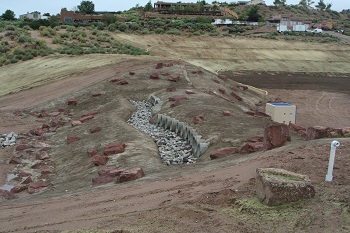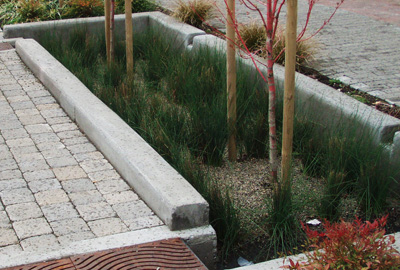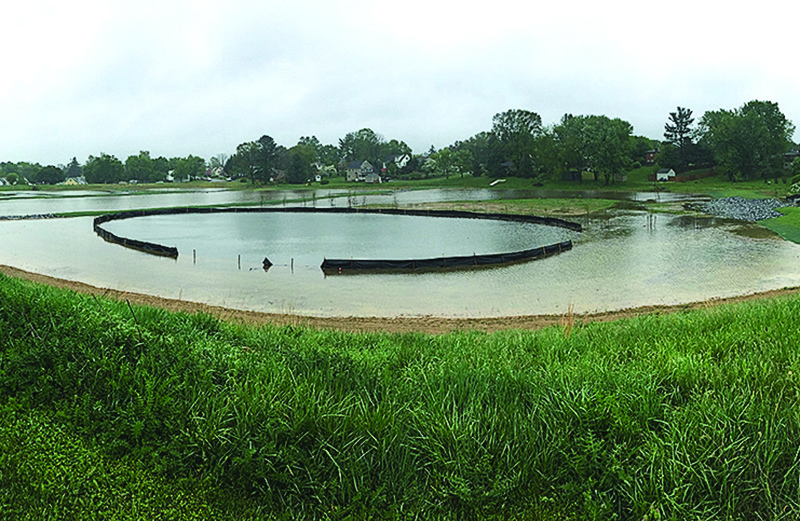Interested in Stormwater?
Get Stormwater articles, news and videos right in your inbox! Sign up now.
Stormwater + Get AlertsThe EPA recently recognized 28 different wastewater, septic system and stormwater projects for being innovative in their design or financing.
Projects funded by the federal low-interest loan program, the Clean Water State Revolving Fund, were eligible for recognition. Each participating state program nominated one project. MSWmag.com has been taking a closer look at some of the recognized projects:
Tunnel Project Expected to Reduce CSOs by 90 Percent
Park Projects Create 1.2 Million Gallons of Stormwater Storage for City
Converting Storm Sewer to Creek Helps City Fight Chronic Flooding
Utility Saves Big on CSO Project Financing
Utility Funnels Federal Funds to Customers' Sewer Lateral Replacements
Corrales, New Mexico
Severe flooding in 2006 and 2013 in the village of Corrales, New Mexico, inspired the Southern Sandoval County Arroyo Flood Control Authority to take on a new infrastructure project. But the authority decided to take an all-natural approach instead of building something mechanical.
With the help of a $2 million Clean Water State Revolving Fund loan, the authority designed a flood control area in the sandy desert hills between Rio Rancho and Corrales that uses a “living screen” plant colony to filter out stormwater debris and barrier rocks to prevent sediment buildup. It’s able to remove up to 65,000 cubic yards of sediment and suspended solids from stormwater runoff. Along with other measures that have been implemented in recent years, it helps improve the performance of the Harvey Jones Channel, the source of the flooding issues. Also, a series of dry wells promotes groundwater recharge.
“I really appreciate the natural look of it and the attention to detail when it comes to green infrastructure. It just really looks nice and really blends well with the environment,” Rio Rancho Mayor Gregg Hull told The Rio Rancho Observer.
“The idea is to try and do flood control with an eye toward the environment that we’re in, which is a rural environment. The village of Corrales wants to remain rural, so as the flood comes down, we’re actually trying to keep the hard elements to a minimum so we’re not just building a lot of concrete,” Chuck Thomas, executive engineer at the flood control authority, told The Rio Rancho Observer.

The Southern Sandoval County Arroyo Flood Control Authority designed a flood control area in the sandy desert hills between Rio Rancho and Corrales that uses a “living screen” plant colony to filter out stormwater debris and barrier rocks to prevent sediment buildup.
Philadelphia, Pennsylvania
The city of Philadelphia has used the Clean Water State Revolving Fund program in a unique way to combat its CSO problems. Instead of the traditional process of planning, designing, and bidding out a project before the loan is executed, the city launched a green initiative in 2011 in partnership with the EPA and backed in part by Clean Water State Revolving Fund financing in which new projects are continuously selected every six months — a variety of green best practices, such as green roofs, curb bump-outs, rain gardens, permeable pavement, wetlands, tree plantings and stream restoration. Since 2011, 95 different projects have been completed, reducing stormwater runoff and CSOs by 1.7 billion gallons per year.
Check out these other stories that have run on MSWmag.com about Philadelphia’s long-term green infrastructure initiative:
Trying to Reduce Stormwater Runoff? In Philly, There's an App For That
Keeping Waterways Clean by Offering a Second Chance

Since 2011, 95 different projects have been completed as part of Philadelphia's long-term green infrastructure initiative.
Waynesboro, Virginia
Waynesboro, Virginia, used a Clean Water State Revolving Fund loan to turn a field containing a small stream and dry detention pond into a stormwater system that helps protect the South River and Chesapeake Bay from polluted runoff.
A 20-year, $870,376 State Revolving Fund loan at zero percent interest was paired with a state grant to fund the $1.7 million project. The existing stream was re-routed through four terraced ponds created in the field, which delay the flow of excess stormwater during rainstorms. Native plants and trees were placed to help filter pollutants. The wetland is a Level 2 design, meaning it removes 75 percent of phosphorus and 55 percent of nitrogen. It handles the runoff from 330 acres of residential neighborhood and is expected to prevent 300 pounds of phosphorus and 1,700 pounds of nitrogen from entering the South River and ultimately Chesapeake Bay.
A community garden, trails around the ponds, and signs explaining the history of the project are also being developed for the site.

Waynesboro, Virginia, used a Clean Water State Revolving Fund loan to turn a field containing a small stream and dry detention pond into a stormwater system that helps protect the South River and Chesapeake Bay from polluted runoff.





